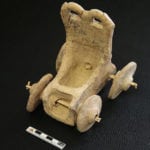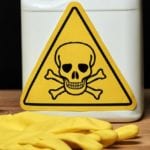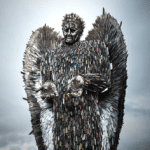 Weird Stuff
Weird Stuff  Weird Stuff
Weird Stuff  Health
Health Ten Confounding New Inventions from the World of Biomedicine
 Creepy
Creepy 10 Death Superstitions That Will Give You the Creeps
 Movies and TV
Movies and TV 10 Movies That Get Elite Jobs Right, According to Experts
 Weird Stuff
Weird Stuff 10 Times Real Laws Were Based on Bizarre Hypotheticals
 Animals
Animals 10 Inspiring Tales of Horses Being Human
 Mysteries
Mysteries Top 10 Haunting Facts About the Ghost Ship MV Alta
 History
History 10 Surprising Stories About the Texas Rangers
 Humans
Humans 10 Philosophers Who Were Driven Mad by Their Own Theories
 Miscellaneous
Miscellaneous 10 Video-Game-Worthy Weapons and Armors from History
 Weird Stuff
Weird Stuff 10 Warning Labels That Exist Because Someone Actually Tried It
 Health
Health Ten Confounding New Inventions from the World of Biomedicine
 Creepy
Creepy 10 Death Superstitions That Will Give You the Creeps
Who's Behind Listverse?

Jamie Frater
Head Editor
Jamie founded Listverse due to an insatiable desire to share fascinating, obscure, and bizarre facts. He has been a guest speaker on numerous national radio and television stations and is a five time published author.
More About Us Movies and TV
Movies and TV 10 Movies That Get Elite Jobs Right, According to Experts
 Weird Stuff
Weird Stuff 10 Times Real Laws Were Based on Bizarre Hypotheticals
 Animals
Animals 10 Inspiring Tales of Horses Being Human
 Mysteries
Mysteries Top 10 Haunting Facts About the Ghost Ship MV Alta
 History
History 10 Surprising Stories About the Texas Rangers
 Humans
Humans 10 Philosophers Who Were Driven Mad by Their Own Theories
 Miscellaneous
Miscellaneous 10 Video-Game-Worthy Weapons and Armors from History
10 Deadly Household Items You’ve Probably Used Today
We often associate home with safety. It is where we retreat from danger and seek shelter from harm. However, in reality, our own household can be a hazardous place.
Every year, countless people are injured, and many die from products that most people use daily. Despite the probable extensive babyproofing and regular maintenance you’ve done, the places we all call home contain numerous mysterious accidents waiting to happen.
While most of us only glance at warning labels and disregard safety tips on products that we think we know, spending an extra minute analyzing and combatting the risks could save your life. Chances are, you probably own the majority of these fatal items, and you’ve probably even used them today.
But did you know they could kill you? We all blow out candles before we leave the house, and we never leave the stove on. But these things are seemingly far less dangerous. The following list provides a guide to common household items that can surprisingly kill you.
10 Bleach
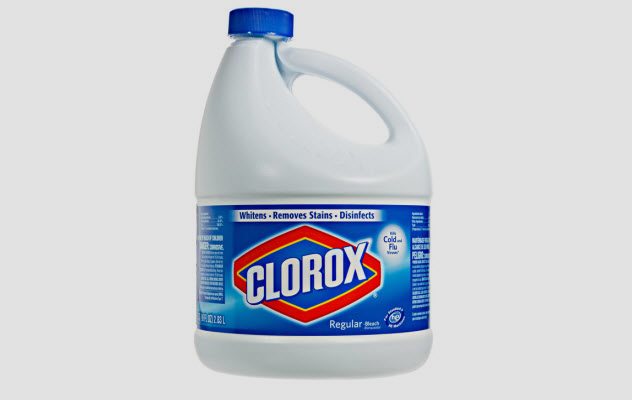 Bleach, which is intended to clean even the most severe messes, can be very dangerous. Consuming bleach or even inhaling it can be fatal. However, when mixed with other cleaners like ammonia and acids, deadly effects can also result.
Bleach, which is intended to clean even the most severe messes, can be very dangerous. Consuming bleach or even inhaling it can be fatal. However, when mixed with other cleaners like ammonia and acids, deadly effects can also result.
The primary ingredient in bleach is sodium hypochlorite. When mixed with ammonia, this substance releases toxic gases called chloramines. When mixed with acids, bleach gives off chlorine gas, which can harm the mucous membranes even after minimal exposure. It can even be absorbed through the skin![1]
While the dangerous possibilities of mixing bleach may come as a surprise, people are no stranger to the power of bleach alone. In fact, one Chicago woman was charged with first-degree murder in early 2017 after she forced her boyfriend to ingest bleach. An autopsy confirmed the death was a direct result of “complications from forcible administration of a caustic substance” and was, therefore, ruled a homicide.
9 Toothpaste
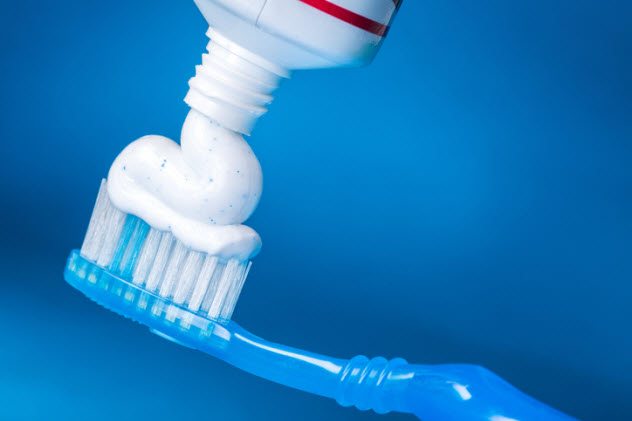
You may have never noticed the poison warning that the FDA requires on every tube of toothpaste. This is predominantly because a staggering 95% of toothpaste in the United States contains fluoride.
While the severity of effects ranges in tandem with the amount consumed, the FDA urges you to contact a poison control center if you consume even just a bit more than used for brushing. The Fluoride Action Network explains that the dental community has “failed to educate the public about the dangers of swallowing too much fluoride toothpaste.”[2]
Shockingly, most toothpaste suggests using only a pea-size amount. However, advertisements depict much larger portions, which can be dangerous. This can be especially harmful to children, who may not accurately gauge the amount of toothpaste needed or even overindulge because of artificial flavoring.
The FDA originally required the aforementioned poison warning because overconsumption of fluoride toothpaste in children can result in acute fluoride poisoning and even death. Another major risk factor of toothpaste is dental fluorosis, a side effect that attacks tooth enamel and can result in severe reactions.
Toothpaste, ironically intended to keep us hygienic and healthy, can ultimately be deadly.
8 Acetaminophen
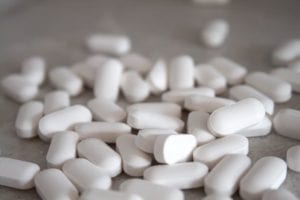
Got a headache? Hurt your back? Does your tooth ache? Take a Tylenol! But you may want to be careful when you find yourself popping these pills. Acetaminophen (APAP), the pain relief component of this medication that you may often take, can sometimes be deadly when you consume too many of them. But it’s not just Tylenol you need to watch out for. Acetaminophen is also found in Midol, Excedrin, Pamprin, Mucinex, Robitussin, and Vicks. In fact, there are approximately 500 deaths related to APAP overdoses each year, according to the American Council on Science and Health.[3] Large amounts of APAP can overwhelm the liver and cause liver damage, so to avoid overdosing, you shouldn’t take more than 3,000 mg per day. Tylenol is still one of the most popular over-the-counter pain relievers on the market even if it can be toxic at high levels.
You may recall the 1982 Chicago Tylenol Murders in which seven people died from taking cyanide-potassium-laced pills. This scare prompted manufacturers to change how OTC medications were packaged and spurred the government to pass anti-tampering laws. Even though this crime remains unsolved, Tylenol and other acetaminophen medications are safe as long as you don’t take too many—just be careful to check that safety seal.
7 Mothballs
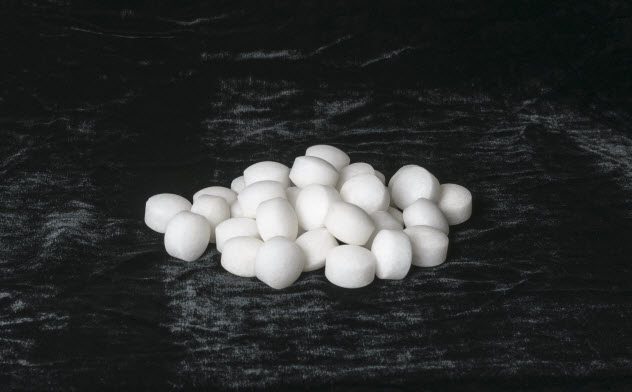
Composed of either naphthalene or paradichlorobenzene (chemicals as harmful as their words are long), mothballs pose a serious threat to household safety. Used for years to prevent the presence of moths, they are a serious risk at home, primarily toward young children.[4]
The Department of Public Health explains that both chemicals become gases when exposed to oxygen. This also causes a distinct aroma. This gas is not only an irritant to the eyes and lungs but is even suspected of potentially causing cancer.
Babies have a lesser ability to clear these by-products from their bloodstreams. As a result, of the approximately 4,000 children exposed to mothballs each year, 600 require immediate medical attention. Jaundice, the yellowing of the skin, is a key symptom that can lead to organ failure and even death.
Since mothball toxins can harm through ingestion, inhalation, and even skin intake, it is suggested that other means of preventing moths should be used. Notably, mothballs should stop being used to prevent the presence of other animals in places like attics and gardens.
6 Dryer Lint
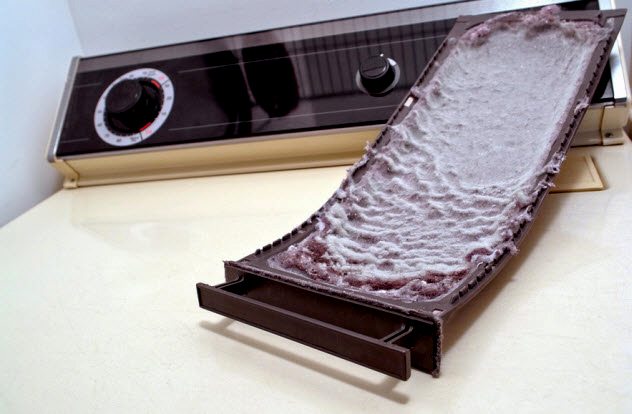
The US Consumer Product Safety Commission reports that more than 15,000 fires start each year from clothes dryers. Debris collected, such as lint, can accumulate in the vent and reduce airflow. This prevents the dryer exhaust gases from expelling and initiates a fire.
Angie’s List founder, Angie Hicks, says, “Clothes dryers are an appliance we often take for granted. We need to maintain them and, most importantly, have their vents cleaned.”[5]
Have your clothes ever still been damp after one complete cycle in the dryer? Glen Mayfield, a dryer technician, says this is the first sign that your dryer vent could be clogged, a hazardous situation that may lead to a fire.
Interestingly, newer homes tend to place the washing and drying machines toward the center of the house, which obviously means a much longer vent. This results in increased difficulty in lint removal and makes these homes more susceptible to fire.
5 Lead Paint
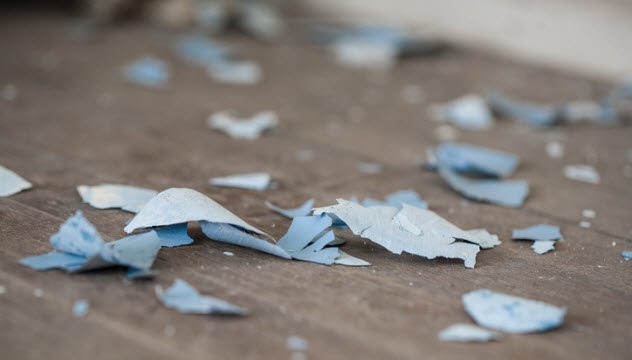
In 1978, the U.S. government banned the use of all paints containing lead. Homes and buildings built earlier pose the risk that their occupants may suffer from lead poisoning.
Lead-based paints are still present in millions of homes across the U.S., and their risks aren’t well-known. The Environmental Protection Agency reports that the most critical risk occurs when the lead paint deteriorates.
It can also be a hazard when present on surfaces that children use or chew on, such as windows, doors, and stairs.[6] While lead is naturally occurring, extensive exposure can result in death. It is explicitly advised that any lead-based paint be removed as soon as possible.
4 Extension Cords
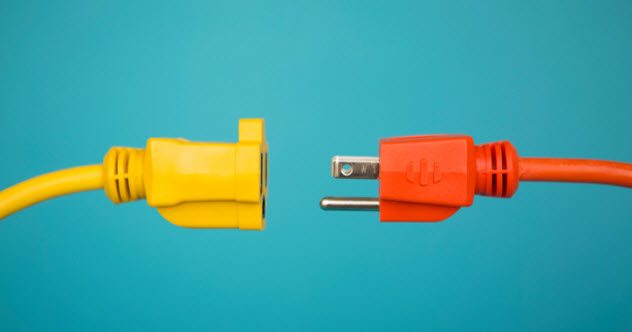
While very useful, extension cords are far more dangerous than most people realize (aside from the obvious tripping hazard). Used at home and in the workplace to transfer power wherever needed, extension cords are also extremely flammable.
Believe it or not, approximately 3,300 home fires occur each year because of extension cords, killing about 50 people and injuring around 270 more. Additionally, 4,000 injuries associated with extension cords are treated in the emergency room.
Even more interesting, half of these injuries are fractures, sprains, or lacerations.[7] The Electrical Safety Foundation suggests that extension cords be used only for temporary needs and should not overheat in any way.
3 Furniture Polish
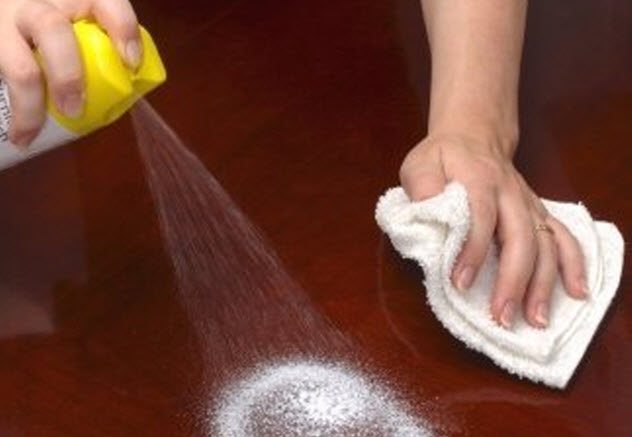
Furniture polish can make your furniture look brand new, but it can also cause a trip to the emergency room. Although it’s a common item found under the kitchen sink in homes around the world, furniture polish possesses an extremely toxic composition.
MedlinePlus, a service of the U.S. National Library of Medicine and the National Institutes of Health, reports that the hydrocarbons within liquid furniture polish are likely to poison the body when swallowed or even inhaled.[8]
The compound presents numerous risks to several body parts. If it reaches your eyes, it can cause vision loss. If inhaled, it can cause serious lung damage. If you have further skin contact, it can cause severe irritation. Furniture polish is simply not worth having around the house to give your wood a little extra shine, particularly if children are present.
2 Nonstick Cookware
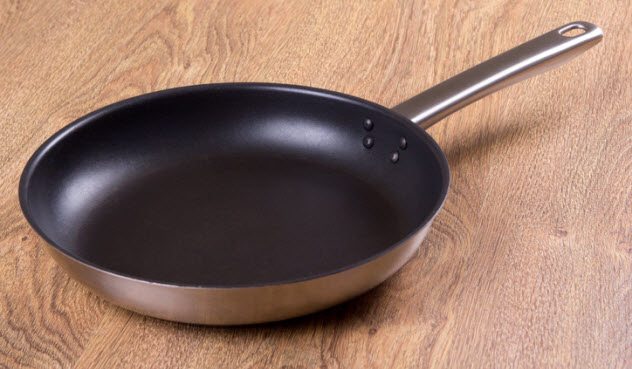
Nonstick pans are a vital component of any cook’s kitchen—from restaurant chefs to home culinary experimenters. In 2006, 90% of all aluminum cookware sold was “nonstick,” often coated with a substance called Teflon.
This percentage has continued to rise, but so has skepticism from experts who report dangerous chemical emissions. Robert L. Wolke, Ph.D., of the University of Pittsburgh indicates that nonstick pans are safe as long as they are not overheated.[9]
When the cookware reaches an unsuitable temperature, the coating begins to deteriorate at an invisible molecular level, and toxic gases can be released. This is particularly alarming considering how common it is to forget something on the stove—we have all done it!
As more research continues to affirm this concern, it is increasingly important that the kitchen is always monitored. Otherwise, nonstick cookware can pose fatal risks to its users.
1 Pressure Washers
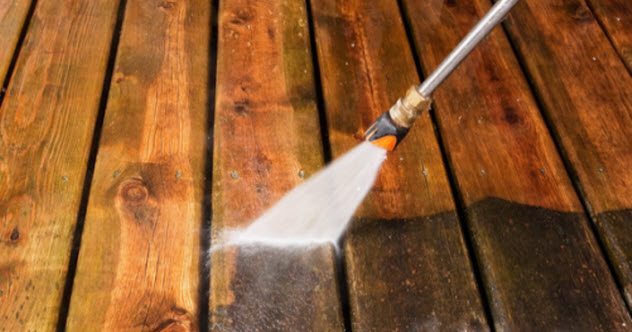
Valued for their efficiency and effectiveness, power washers are overtaking traditional garden hoses in an epic way. These machines use either a gas engine or electric motor and consequently boost the intensity of the average hose by 30 to 80 times.
According to Consumer Reports, a basic garden hose delivers water pressure at approximately 50 pounds per square inch. In contrast, pressure washers can produce 80 times that power at 1,500 to 4,000 pounds per square inch.
When the powerful stream is aimed incorrectly, the rel=”noopener” target=”_blank”water has enough force to damage skin in an instant. Physician Howard Mell, MD, says, “The extreme danger with pressure washers is that even with what seems a very minimal skin break, the fluid can get into the tissue and spread out and cause bacterial infection.”
This can be deadly. Also, the prolonged concentration of the pressurized stream to the human body can cause organ damage and potentially death. It is estimated that over 6,000 people went to the emergency room in 2014 with pressure-washer-related injuries.[10]
It is suggested that your outdoor cleaning be performed with wider-angle instruments. They take more time but have the same effect with far less risk. Next time you fire up the power washer to clean up the yard, consider that it could result in your doctor cleaning you in the operating room.
Art Andersen is a freelance writer currently saving his pennies to purchase a new computer to take his research and writing to the next level.
Read more about seemingly safe items and experiences that turned deadly on 10 Horrifyingly Deadly Sweets And Treats and 10 Deadly Cases Of Hypnosis.

